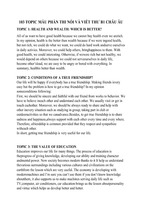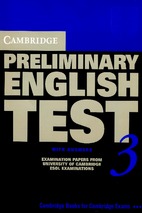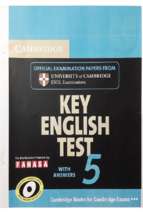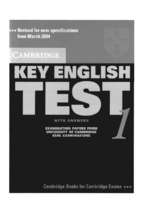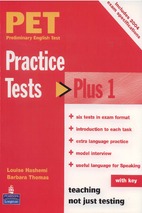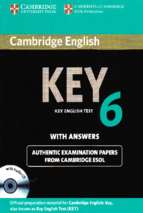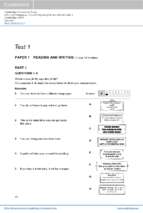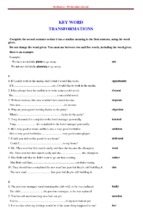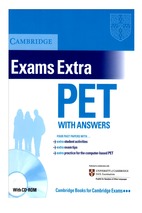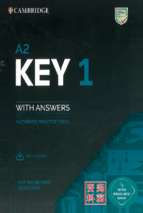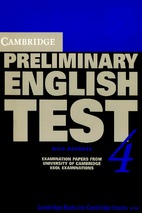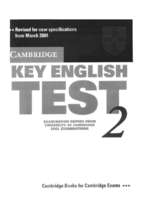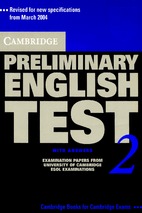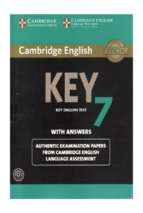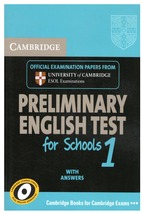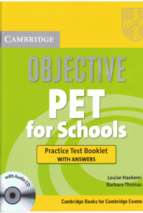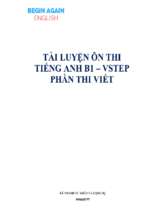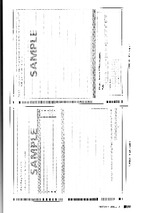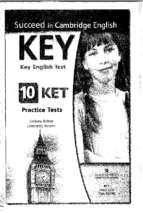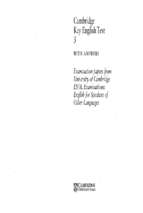Collins
=
P O W E R E D BY C O B U I L D
WorA: on your
Hundreds of words to learn and remember
A1
Contents
Introduction
Is this the right book for me?
What does this book contain?
I'm a student: how can I use this book?
Study tips
I want to improve my vocabulary
I'm a teacher: how can I use this book with my classes?
Lesson plan
Guide to word classes
1
2
3
4
5
6
7
8
9
10
11
12
13
14
15
16
17
18
19
20
21
22
23
24
25
26
27
28
29
30
Talking about yourself
Family
House and home
Describing objects
Parts of the body and describing people
Clothes
Talking about people
School and university
Sports and leisure
Work and jobs
Daily routines
Words that are used together (collocations)
Time
Transport
In town
Health, medicine and exercise
Food
Talking about what you like
Travel and holidays
Weather
Natural world
Entertainment and the media
Phrases with do, get, go, have, make and take
Words that connect sentences
Where things are
What is it like? How is it done?
Shopping
Feelings
Signs and notices
Countries, nationalities and languages
Answer key
Index
4
4
4
5
5
5
7
7
9
10
13
16
20
24
27
31
35
38
41
45
48
51
54
58
62
66
70
74
77
81
85
89
92
95
98
101
105
108
111
114
123
книга выложена группой vk.com/create_your_english
Introduction
Welcome to Work on your Vocabulary - Elementary (A1).
Is this the right book for me?
This book, Work on your Vocabulary - Elementary (A1), helps students to learn and practise
English vocabulary at CEF level A1 .This book is suitable for you to use if you are at CEF level A1,
or just below.
So, what is CEF level A1 ? Well, there are six Common European Framework levels. They go up
from A1 for beginners, A2, B1, B2, C1 and finally C2.
If the description below sounds like you, then this is probably the right book for you. If you
think your English is higher in level than this, choose Work on your Vocabulary -
Pre-Intermediate (A2).
•
•
I can understand and use common words and expressions.
I know words for talking about everyday things,such as my daily life, my home and friends
and family.
•
I can have simple conversations with people.
•
I need people to talk slowly and clearly to me.
• I'm sure I make lots of mistakes!
What does this book contain?
This book contains 30 units to help you learn and practise important vocabulary for this
elementary (AT) level.
Each unit gives you explanations and definitions of the words and expressions for the topic
area, in the Word Finder boxes.
There is a series of exercises that give you useful practice in this particular area.
The answers to all the exercises are at the back of the book.
At the back of the book, you'll also find a list of all the words introduced in the book (the Index).
Each word has the unit number next to it, so you can find it easily in the main part of the book.
There are Good to know! boxes to help you to pay attention to important information about
the words and expressions.
Work on your Vocabulary Elementary (A1)
Introduction
I'm a student: how can I use this book?
You can use this book in different ways. It depends on your needs, and the time that you have.
• If you have a teacher, he or she may give you some advice about using the book.
• If you are working alone, you may decide to study the complete book from beginning to
end, starting with Unit 1 and working your way through to the end.
• You might find that it is better to choose which units you need to study first, which might
not be the first units in the book. Take control of what you learn and choose the units you
feel are most important for you.
• You may also decide to use the book for reference when you are not sure about a particular
vocabulary topic.
• You can find what you want to learn about by looking in the Contents page.
• Please note that, if you do not understand something in one unit, you may need to study a
unit earlier in the book for more explanation.
Study tips
1 Read the aim and introduction to the unit carefully.
2 Read the explanation. Sometimes, there is a short text or dialogue; sometimes there are
tables of information; sometimes there are examples with notes. These are to help you
understand the most important information about this area of vocabulary.
3 Don't read the explanation too quickly: spend time trying to understand it as well as you
can. If you don't understand, read it again more slowly.
4 Do the exercises. Don't do them too quickly: think carefully about the answers. If you don't feel
sure, look at the explanation and Word Finder box again. Write your answers in pencil, or, even
better, on a separate piece of paper. (This means that you can do the exercises again later.)
5 Check your answers to the exercises in the back of the book.
6 If you get every answer correct, congratulations! Don't worry if you make some mistakes.
Studying your mistakes is an important part of learning.
7 Look carefully at each mistake: can you now see why the correct answer is what it is?
8 Read the explanation and definitions again to help you understand.
9 Finally, if the unit includes a Good to know! box, then try really hard to remember what it
says. It contains a special piece of information about the words and expressions.
10 Always return: come back and do the unit's exercises again a few days later. This helps you
to keep the information in your head for longer.
I want to improve my vocabulary
Good! Only using one book won't be enough to really make your vocabulary improve. The most
important thing is you!
Buy a good dictionary for your level. You could try the Collins COBUILD Illustrated Intermediate
Dictionary of English or the Collins Primary Learner's English Dictionary. Collins Easy Learning
English Vocabulary might also be a useful book to have.
книга выложена группой vk.com/create_your_english
Of course, you need to have a notebook, paper or electronic. Try these six techniques for getting
the best from it.
Make it personal: When you're learning a new word or expression, try to write some
examples about yourself or people or places you know. It's easier to remember sentences
about your life than someone else's! For example, I have one older brother and two younger
sisters.
Look out: Everything you read or hear in English may contain some examples of the new
vocabulary you're learning. Try to notice these examples. Also, try to write down some of
these examples, so that you can learn them.
Think aloud: Practise saying the new words aloud. It helps you to remember them better.
Also, pronunciation is very important; people need to understand you!
Everywhere you go: Take your notebook with you. Use spare moments, such as when you're
waiting for a friend to arrive. Read through your notes. Try to repeat things from memory.
A few minutes here and there add up to a useful learning system.
Take it further: Don't just learn the examples in the book. Keep making your own examples,
and learning those.
Don't stop: It's really important to keep learning. If you don't keep practising, you won't
remember for very long. Practise the new vocabulary today, tomorrow, the next day, a
week later and a month later.
Work on your Vocabulary Elementary (A1)
Introduction
I'm a teacher: how can I use this book with my classes?
The contents included have been very carefully selected by experts from Language Testing 123,
using the Common European Framework for Reference, English Profile, the British Council Core
Inventory, the Collins Corpus and the Collins COBUILD dictionaries range. As such, it represents
a useful body of knowledge for students to acquire at this level. The language used is designed
to be of effective general relevance and interest to any learner aged 14+.
The units use a range of exercise types to engage with students and to usefully practise what
they have learnt from the explanation pages on the left. There are enough exercises for each
unit that it is not necessary for students to do all the exercises at one sitting. Rather, you may
wish to return in later sessions to complete the remaining exercises.
The book will be a valuable self-study resource for students studying on their own. You can also
integrate into the teaching that you provide for your students.
The explanations and exercises, while designed for self-study, can be easily adapted by you to
provide useful interactive work for your students in class.
You will probably use the units in the book to extend, back up or consolidate language work you
are doing in class. This means you will probably make a careful choice about which unit to do at
a particular time.
You may also find that you recommend certain units to students who are experiencing
particular difficulty with specific language areas. Alternatively, you may use various units in the
book as an aid to revision.
Lesson plan
1 Read the aim and introduction to the unit carefully: is it what you want your students to
focus on? Make sure the students understand it.
2 Go through the explanation with your students. You may read this aloud to them, or ask
them to read it silently to themselves. With a confident class, you could ask them to read
some of it aloud.
3 If there is a dialogue, you could ask students to perform it. If there is a text, you could
extend it in some way that makes it particularly relevant to your students. Certainly, you
should provide a pronunciation model of focus language.
4 Take time over the explanation page, and check students' understanding. Use conceptchecking questions.
5 Perhaps do the first exercise together with the class. Don't do it too quickly: encourage
students to think carefully about the answers. If they don't feel sure, look together at the
explanation again.
6 Now get students to do the other exercises. They can work alone, or perhaps in pairs,
discussing the answers. This will involve useful speaking practice and also more careful
consideration of the information. Tell students to write their answers in pencil, or, even
better, on a separate piece of paper. (This means that they can do the exercises again
later.)
7 Check their answers to the exercises in the back of the book. Discuss the questions and
problems they have.
книга выложена группой vk.com/create_your_english
8 If the unit includes a Good to know! box, then tell students to try really hard to
remember what it says. It contains a special piece of information about the words and
expressions.
9 Depending on your class and the time available, there are different ways you could
extend the learning. If one of the exercises is in the form of an email, you could ask your
students to write a reply to it. If the exercises are using spoken language, then you can
ask students to practise these as bits of conversation. They can re-write the exercises with
sentences that are about themselves and each other. Maybe pairs of students can write an
exercise of their own together and these can be distributed around the class. Maybe they
can write little stories or dialogues including the focus language and perform these to the
class.
10 Discuss with the class what notes they should make about the language in the unit.
Encourage them to make effective notes, perhaps demonstrating this on the board for
them, and/or sharing different ideas from the class.
11 Always return: come back and repeat at least some of the unit's exercises again a few days
later. This helps your students to keep the information in their heads for longer.
Work on your Vocabulary Elementary (A1)
introduction
Guide to word classes
All the words in Word Finder boxes have a word class. The table below gives you more
information about each of these word classes.
Word class
Description
ADJECTIVE
An adjective is a word that is used for telling you more about a
person or thing. You use adjectives to talk about appearance,
colour, size, or other qualities, e.g. He has got short hair.
ADVERB
An adverb is a word that gives more information about when,
how, or where something happens, e.g. She went inside.
CONJUNCTION
A conjunction is a word such as and, but, if, and since.
Conjunctions are used for linking two words or two parts of a
sentence together, e.g. I'm tired and hungry.
NOUN
A noun is a word that refers to a person, a thing, or a quality,
e.g. 1live in the city.
PHRASAL VERB
A phrasal verb consists of a verb and one or more particles,
e.g. When 1go outside, 1put on a warm coat.
PHRASE
Phrases are groups of words that are used together and that have
a meaning of their own, e.g. 1would like to get a new job.
PLURAL NOUN
A plural noun is always plural, and it is used with plural verbs,
e.g. My clothes are in my suitcase.
PREPOSITION
A preposition is a word such as below, by, with, or from that
is always followed by a noun group or the -ing form of a verb.
Prepositions are usually used to say where things are, e.g. You can
park outside the house.
PRONOUN
A pronoun is a word that you use instead of a noun, when you
do not need or want to name someone or something directly,
e.g. He lives in London;you need to try several different ways of
doing it.
VERB
A verb is a word that is used for saying what someone or
something does, or what happens to them, or to give information
about them, e.g. Can 1pay by credit card?
книга выложена группой vk.com/create_your_english
Talking about yourself
Where I live
My name is Louisa. I live in the countryside
My name is Thomas. I live in the city. I am a student.
with my family.
I go to university.
Giving information
First Name: i J~i
^ i ' i a \ I I I I I I I I I.
Family Name: I^ _ l I_Zl s _o |_^i_ i
i [ |_| j__L_l
Address:
Number:
street:
I lI________
I l I I________
I I I I I________
I I
________ I________
I________ L
T own/City:
A g e:_^0____________ Nationality:
c^ood to
B ritish
___
feiA/Ow!
It is important to use the rightprepositions:
I was born in_
/???.
/ live in the city.
Dad is at work.
/ go to school/college/university.
! study English at school/college/university.
10
Work on your Vocabulary Elementary (A1)
UNIT 1 Talking about yourself
Words for talking about yourself
address
noun
Your address is the number of the building, the name of the street, and the
town or city where you live or work.
age
noun
b e ... years old
ph rase
born
verb
city
noun
A city is a large town.
college
noun
College is a place where students study after they leave school.
countryside
noun
The countryside is land that is away from cities and towns.
noun
A family is a group of people who are related to each other, usually parents and
fam ily
Your age is the number of years that you have lived.
If someone is twelve years old, they have lived for twelve years.
When a baby is born, it comes out of its mother's body and begins life.
their children.
fam ily name
noun
first name
noun
Your first name is the name that comes before your family name.
jo b
noun
A job is the work that someone does to earn money.
live
verb
name
noun
nationality
Your family name is the part of your name that all the people in your family
have.
If you live somewhere, you have your home in that place.
A person's name is the word or words that you use to talk to them, or to talk
about them.
n o u n If you have the nationality of a particular country, you are a legal citizen of that
country.
school
noun
A school is a place where people go to learn.
street
noun
A street is a road in a city or a town.
student
noun
A student is a person who is studying at a school, college, or university.
study
1 v e r b If you study, you spend time learning about a particular subject.
2 n o u n Study is the activity of studying.
university
noun
work
verb
A university is a place where you can study after school.
People who work have a job and earn money for it.
Exercise 1
Put the correct word in each gap, as shown.
college
| lives
| first
j[ years
| student
| age
| family
My best friend
My best friend's
first
name is Jane and her 2_
name is Johnson.
Sh e3___________
----------- in Manchester with her mother and father. She is 17 4____
old. She likes dancing. Jane is a 5_________________ and is studying marketing at
Exercise 2
Match the sentence halves, as shown.
1 1was born —
a big city.
2 1live in
b French nationality.
3 My address
in 1993.
4 1am 19
d years old.
5 I have
e is 21 Hope Street.
6 I study at a
f university.
Exercise 3
Choose the correct word or words, as shown.
1 I live in a small(£jty)/ countryside / address.
2 My first name is Peter / Mr Johnson / student.
3 I live with my family / school / nationality.
4 I am studying at school, so I don't have a name / job / student.
5 I am 18 age / bom /years old.
Exercise 4
Put the correct word in each gap, as shown.
university
| family
| born
| study
| job
| name
| work
Dear penfriend,
Hi, my 1_____ nam e _____
js
Ronald Harrison and 12__________________ in a restaurant.
I live with m y3________________ in a big house near the city. Next year, I want to go to
4__________________I want to 5__________________ to be a doctor. I like reading and watching TV.
I was 6________________ in 1995.
Write soon!
Ronald
Exercise 5
Find the wrong or extra word in each sentence, as shown.
1 What is^f your name?
2 Where address do you live?
3 How age old are you?
4 What nationality country have you got?
5 Are you a student school?
6 What work is your job?
Work on your Vocabulary Elementary (A1)
Family
Look at the family tree:
Grandparents
Parents
Children
Peter is Adam and Anna's grandfather.
Ann is Adam and Anna's grandmother.
Martin is Adam and Anna's father.
Catherine is Adam and Anna's mother.
Adam is Martin and Catherine's son.
Anna is Martin and Catherine's daughter.
Adam is Anna's brother.
Anna is Adam's sister.
to
f e ll o w !
Mother andfather are slightly formal words. Whenyou. talk with friends
or family aboutyour own parents, it is usual to say mum and dad
Words for talking about family
be ... years old
ph rase
The number of years old that someone is means the number of years they
have lived.
boy
noun
A boy is a male child.
brother
noun
A brother is a boy or a man who has the same parents as you.
child
noun
A child is a young boy or girl.
children
noun
Children is the plural of child.
dad
noun
Your dad is your father.
daughter
noun
Someone's daughter is their female child.
fam ily
fam ily name
n o u n A family is a group of people who are related to each other, usually parents and
their children.
noun
Your family name is the part of your name that all the people in your family
have.
father
noun
Your father is your male parent.
girl
noun
A girl is a female child.
grandad
noun
Grandad is an informal name for grandfather.
grandfather
noun
Your grandfather is the father of your father or mother.
grandm a
noun
Grandma is an informal name for a grandmother.
grandm other
noun
Your grandmother is the mother of your father or mother.
man
noun
A man is an adult male human.
mother
noun
Your mother is your female parent.
mum
noun
Mum is an informal name for your mother.
old
a d je c t iv e
sister
noun
Your sister is a girl or woman who has the same parents as you.
son
noun
Someone's son is their male child.
young
a d je c t iv e
Someone who is old has lived for many years and is not young.
A young person, animal, or plant has not lived for very long.
Exercise 1
Find the words or phrases that do not belong, as shown.
1
2
3
4
5
6
7
Family members
Ages
Women
Family members
People
Men
Family members
8 What you can call certain people
Work on your Vocabulary Elementary (A1)
brother
^
boy
sister
old
young
family
grandfather
sister
daughter
grandmother
father
young
old
man
girl
brother
son
daughter
mother
family name
grandma
old
dad
mum
UNIT 2 Family
Exercise 2
Put the correct word
family
| children
or words in each gap.
| mum
| years old |young
| brother
Hi Rosella,
My name is Maggie and I'm 14 1_________________ I have a 2__________________ called
Oliver.
He's very3_________- only eight. We live with our4___________________________ and dad. When I
get married, I want to have lots o f5_________________ , because I think a big 6_________________
has fun. Please tell me about your family!
Maggie
Exercise 3
Which sentences are correct?
1 Your father's mother is your grandma.
2 Your mum is the father of your brother or sister.
□
3 Every boy and girl is someone's son.
□
4 Your sister, mother and grandmother are all partof your family.
□
5 Your dad is the daughter of your grandmother andgrandfather.
Q
6 Your mother and father's sons are your brothers.
O
Exercise 4
Find the wrong or extra word in each sentence.
1 James is the six years old and he is a very happy child.
2 He has five brothers and sisters, so he comes from quite a big family name.
3 There are three brother boys and two girls.
4 Sarah, one of James's sisters girls, is married and has two children.
5 How much old was Sarah when James was born?
6 Sarah's old daughter is called Sue.
Exercise 5
Are the highlighted words correct or incorrect in the sentences?
1 William Shakespeare's family name 23 was William.
2 Shakespeare was very young □ when he got married - only 19.
3 He married Anne Hathaway and they had three children □ : Susanna, Hamnet and Judith.
4 Their son, Hamnet, was the only mother □ in the family.
5 Susanna and Judith were William's two dads Q .
6 William was the grandma □ of Elizabeth, Susanna's daughter.
книга выложена группой vk.com/create_your_english
House and home
Things in your house
Describing your house
I live in a small house near the river. It has a living room and two bedrooms. It doesn't have a dining
room but I have a table and two chairs in my kitchen. The bathroom is very small, so I have a shower,
not a bath. I also have a garden where I grow flowers and vegetables. I love living here.
Work on your Vocabulary Elementary (A1)
UNIT 3 House and home
Words for talking about house and home
address
noun
Your address is the number of the building, the name of the street, and the
town or city where you live or work.
bath
noun
A bath is a container that you fill with water and sit in to wash your body.
bathroom
noun
A bathroom is a room that contains a bath or a shower and often a toilet.
bed
noun
A bed is a piece of furniture that you lie on when you sleep.
bedroom
noun
A bedroom is a room where people sleep.
chair
noun
A chair is a piece of furniture for one person to sit on, with a back and four legs.
d ining room
noun
A dining room is a room where people eat their meals.
door
noun
A door is a piece of wood, glass, or metal that fills an entrance.
flat
noun
A flat is a set of rooms for living in, usually on one floor.
garden
noun
A garden is an area by your house where you grow flowers and vegetables.
home
noun
Someone's home is the place where they live.
house
noun
A house is a building where people live.
key
noun
A key is a shaped piece of metal that opens or closes a lock.
kitchen
noun
A kitchen is a room that is used for cooking.
live
verb
livin g room
noun
If you live somewhere, you have your home in that place.
The living room in a house is the room where people sit together and talk or
watch television.
shower
noun
A shower is a thing that you stand under, that covers you with water so you can
wash yourself.
table
noun
toilet
A table is a piece of furniture with a flat top that you put things on or sit at.
n o u n A toilet is a large bowl with a seat that you use when you want to get rid of
waste from your body.
wall
noun
window
noun
A wall is one of the sides of a building or a room.
A window is a space in the wall of a building or in the side of a vehicle that has
glass in it.
Exercise 1
Put the correct word or words in each gap.
bedroom
| addresses
| lives
| living room
| dining room
| kitchen
| windows
John 1_________________ in a very nice flat. He has a small2__________________ to sleep in, and a
big 3_________________ to sit in with his friends. He cooks all his meals in his4__________________
He eats meals with his friends in the 5__________________He can see a park from his
Exercise 2
Match the words with the pictures, as shown.
6 dining room
Exercise 3
Choose the correct word, as shown.
1 My(add7ess)y door is 23, Main Street.
2 Ben is sitting outside in the garden / kitchen.
3 Put this picture on the flat / wall.
4 This house has four kitchens / bedrooms.
5 Come in and sit on the table / chair.
6 Dan is looking out of the window / wall.
18
Work on your Vocabulary Elementary (A1)
UNIT 3 House and home
Exercise 4
For each question, tick the correct answer, as shown.
1 In the living room, there are
i^som e chairs.
□ some beds.
2 This key opens the
□ door.
□ table.
3 I live in a small
□ address.
□ flat.
4 The bedroom has white
□ walls.
□ showers.
5 There's a big table in the
□ bath.
Q kitchen.
6 There's a toilet in the
□ living room.
□ bathroom.
Exercise 5
Match the sentence halves.
1 1wash
a in my garden.
2 1cook
b in the bathroom.
3 1sleep
c in the bedroom.
4 1watch TV
d in the living room.
5 1have my lunch
e in the dining room.
6 1sit outside
f in the kitchen.
Exercise 6
Find the words or phrases that do not belong, as shown.
1 Rooms
2 Places to live
3 Things in a dining room
4 Rooms to wash in
5 Parts of a house
6 Things in a bedroom
kitchen
bathroom
flat
toilet
house
garden
chair
table
shower
dining room
bathroom
address
wall
door
bed
window
" (^ w in d o w j)
| flat
книга выложена группой vk.com/create_your_english
1
Describing objects
In this picture, a girl is sitting at a
table, looking at some pieces of
paper. Above her head, there is a big
lamp. There is a rug under the table.
In this picture, a boy is standing by his
bedroom window, looking outside.
The garden below looks lovely. The
sky is blue and the leaves on the trees
are green. The boy can see his dog
behind the trees.
Work on your Vocabulary Elementary (A1)
UNIT 4 Describing objects
Place
Stamp
Here
Vji Mu/ri and J)ad,
Z!/*1 col~itma "th'-S on th e oeOC-h ■~T~he
sand i s e*Snit.e.) th e Sea is A/u&, and
m ere hazing a -fantastic, ho/idcy! O u r
h o t e l /S Ai^ A u t Very mc e . ~T~he -first
roo/yi th ey c^a/e US uJOS a£c*/e th e
diSCo, A u t th ey /et US syjoVe t o a
di-fferejit one, ujhiC-h is nice and
g a ie ti*JiSh y o u coere h ere!
L o t s o f /aVe
M r & M t S ( jjr e e n ,
fSpritiQ Sid e C o t t a g e ,
fifeujtoi*->r>*_________
V71 -zAZ._________
- Xem thêm -

